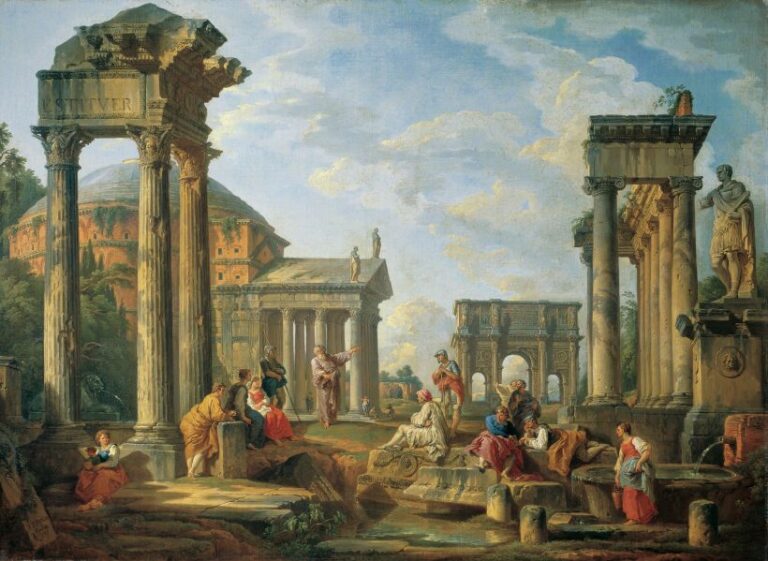In our fast-paced, modern world, we often overlook the importance of our cultural heritage. Yet, cultural heritage is crucial for preserving history, fostering identity, and enriching our societies. This blog post explores the significance of cultural heritage and why it matters to us today and for future generations.
What is Cultural Heritage?
Table Of Contents
Cultural heritage encompasses the legacy of physical artifacts and intangible attributes that we inherit from past generations. It includes monuments, buildings, artworks, traditions, languages, and rituals. These elements provide insights into our history and shape our identities.
Tangible vs. Intangible Heritage
Tangible heritage refers to physical objects like historical sites, artifacts, and architecture. Intangible heritage includes traditions, oral histories, and cultural practices. Both types are vital as they offer a holistic view of our cultural past.
Examples of Cultural Heritage
Famous examples of cultural heritage include the pyramids of Egypt, the Great Wall of China, and the art of Aboriginal Australians. Each of these represents a unique cultural identity and a rich history that has shaped the world.
Why Cultural Heritage Matters
Cultural heritage provides numerous benefits that extend beyond mere preservation of the past. It plays a pivotal role in education, tourism, and community identity.
Educational Value
Studying cultural heritage helps us understand our history and the evolution of societies. It provides context to historical events and fosters critical thinking. Schools and universities often incorporate heritage studies into their curricula to enrich students’ learning experiences.
Boosting Tourism
Tourism thrives on cultural heritage. Destinations like the Grand Canyon Jeep Tours bring visitors eager to experience natural beauty and cultural history. This influx of tourists supports local economies and promotes cultural exchange.
Strengthening Community Identity
Cultural heritage fosters a sense of belonging and community pride. It connects people to their roots and promotes unity. Celebrations of cultural heritage, such as festivals and commemorations, bring communities together.
Challenges in Preserving Cultural Heritage
Despite its importance, cultural heritage faces numerous threats. These challenges require strategic efforts to ensure its preservation for future generations.
Environmental Threats
Natural disasters, climate change, and pollution pose significant threats to cultural heritage sites. For example, rising sea levels endanger coastal heritage sites worldwide.
Human Activities
Urbanization, vandalism, and armed conflicts can damage or destroy cultural heritage. The looting of artifacts and the destruction of historical sites in conflict zones highlight the vulnerability of cultural heritage to human actions.
Lack of Funding
Preservation efforts often require substantial financial resources. Many heritage sites lack the necessary funding for maintenance and conservation, leading to deterioration over time.
Efforts to Preserve Cultural Heritage
Various organizations and initiatives work tirelessly to safeguard cultural heritage. Their efforts ensure that future generations can enjoy and learn from these treasures.
UNESCO World Heritage Sites
UNESCO designates World Heritage Sites to recognize and protect valuable cultural and natural heritage. These sites receive international support for conservation and awareness initiatives.
Local Conservation Projects
Community-led conservation projects play a crucial role in preserving cultural heritage. These initiatives often involve collaborations between governments, non-profits, and local communities to restore and maintain heritage sites.
Technology in Preservation
Advancements in technology have revolutionized heritage preservation. Digital archiving, 3D modeling, and virtual reality allow for the documentation and promotion of cultural heritage, making it accessible to a global audience.
The Role of Education in Heritage Preservation
Educating the public about the importance of cultural heritage fosters a culture of respect and appreciation. Schools, museums, and cultural institutions play a vital role in this effort.
Heritage Education in Schools
Incorporating cultural heritage into school curriculums helps students develop an appreciation for history and culture. Field trips to heritage sites and interactive learning experiences enhance their understanding.
Museums as Educational Hubs
Museums serve as guardians of cultural heritage, offering exhibitions and programs that educate the public. They provide a tangible connection to history and culture, making learning engaging and immersive.
Community Outreach Programs
Community outreach programs bridge the gap between cultural institutions and the public. Workshops, lectures, and cultural events raise awareness about the importance of heritage preservation.
Conclusion
Cultural heritage is invaluable. It connects us to our past, enriches our present, and shapes our future. By understanding its importance and supporting preservation efforts, we can ensure that these treasures endure for generations to come. Whether through education, tourism, or community initiatives, every effort counts. Let’s cherish and protect our cultural heritage.
